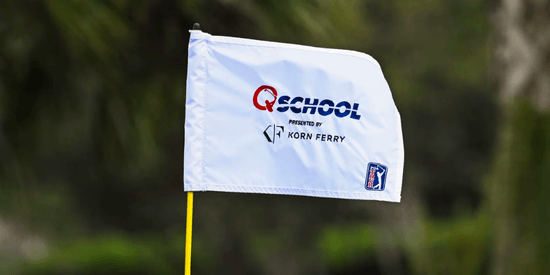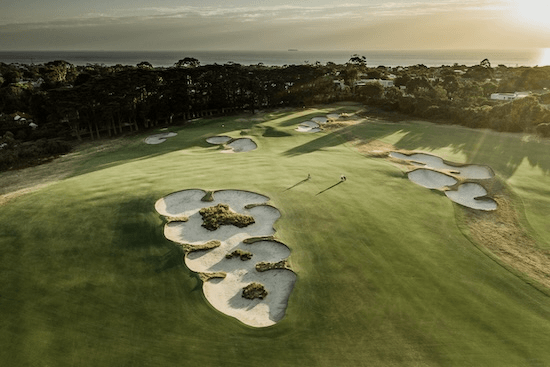How slow play is addressed at the amateur level
By Shawn Allen
The flagstick comes out, and you immediately survey the distance each person stands from the cup. You assess each putting routine with the critical eye of a quality control specialist, and you hold your breath as each white speck glides along the green, hoping it will just disappear so you don’t have to stand in the fairway and take any more passive-aggressive practice swings.
Slow play is the bane of a golfer’s existence, whether your club allows only foursomes or a mix of players per tee time. It has always been part of golf, but not until 2019 did the U.S. Golf Association create a rule suggesting a time limit for each shot.
Still, slow play is not something that can be fixed with just a rule. It’s born out of a variety of factors and perhaps highlights the unhurried nature of the game against the frenetic pace of our modern life.
Rule 5.6b suggests that the first player to play from tee to green should play his or her shot within 40 seconds. This provides a guideline for both recreational and tournament rounds in terms of pace of play, though slow play looks vastly different in these two arenas.
Recreational golf can get backed up because courses jam the tee sheet to get as many players on the course as possible. Often, those golfers take more shots and that means more time.
Darin Green, the Florida State Golf Association’s Director of Rules and Competitions, says pace does not have to be totally dependent on skill, however. In his experience, players shooting rounds in the 100s have been able to keep up with those shooting in the 80s.
Ryan Farb, Director of Rules and Competition for the Northern California Golf Association, agrees, and thinks pace of play is all about groupings.
“There are slow players at every level,” he said.
To mitigate slow players’ effect on a field (or a tee sheet), Farb says you need a balance of field size, intervals, and size of group.
“If one is overloaded, it slows things down.”
Slow pace becomes exacerbated in tournament play with the addition of both players who are not tournament experienced and players who are grinders.
“There are two types of players: Those who are deliberate at everything they do on the course, and those who roll out of bed slowly in the morning,” says Green. The former are aware they are slow and don’t care, while the latter don’t always have that self-awareness.
Fortunately, Green says, the FSGA has used a check-point system for the last 10-15 years to curb the lack of enthusiastic pace.
“We email the policy, give it to players at registration, place signs on the course of what their times should be, give it to them with the scorecard, and from the starter,” he said.
Farb spoke of something similar. His organization uses a single check-point system in addition to a variety of field set ups. For recent collegiate tournaments he has helped organize, they have utilized a double wave model and have improved play by up to 45 minutes, even after increasing the field by up to 50 percent.
Yes, the goal in both recreational and tournament golf is to get as many people on the golf course as are reasonably able to play. It’s supposed to be fun, and fun for most, if not all. That means quality setups and enforcement. It’s not fair for one or two people to spoil a round for the whole field. Education is essential, too, and that means teaching new players how to be ready when it is their turn – glove on, yardage calculated and correct club in hand.
When all else fails, though, it’s as Green says: Penalize them.
“If I speed on the highway and never receive a ticket, then I’ll keep doing it,” Green said. It’s a rather inverted metaphor, but it plays.
When I worked as a teacher, students used to ask me what I liked doing in my free time, and I would rattle off things like golf, fishing, watching baseball and coaching track and field. It dawned on me one fall day in the classroom that I love sports that are outside and seemingly timeless.
Golf has a quality about it that separates it from most other sports. Each competition field is unique. The winning score is the lowest one, not the highest. Most importantly, there is no clock. Yet each time we are on the course, unless we are so lucky to be the first off or alone in the twilight, we complain about the time taken by the groups in front of us or behind us, which is reminiscent of George Carlin’s bit on driving – the fast ones are maniacs, the slow ones are idiots.
Farb has a theory on pace.
“The focus on pace of play has more to do with the world we live in than it does the actual pace of play,” he said.
Times for recreational rounds, amateur tournaments, and even PGA Tour events have not changed much, he insists. We just have more to do, and four-plus hours on the course feels like pulling an anvil through quicksand compared to ordering dinner, calling an Uber and sending a few texts in a matter of minutes.
The game is built upon not having to hurry and is a welcome respite in an increasingly busy world. It is time apart – time away from a busy life where we saunter along chasing a white ball in the graces of people we ought to enjoy.
Nonetheless, you still have to hit the ball. When asked which shots tested the limits of the new 40-second rule, Green recalled a par 3 on the coast of Ireland he had recently played in 40 mph gusts, while Farb cited scar tissue from one too many bladed sand shots.
And both insisted that no matter the difficulty, you still have to hit it. No amount of time added will abate the fact that you still have to hit the ball.
The flagstick comes out, and you immediately survey the distance each person stands from the cup. You assess each putting routine with the critical eye of a quality control specialist, and you hold your breath as each white speck glides along the green, hoping it will just disappear so you don’t have to stand in the fairway and take any more passive-aggressive practice swings.
Slow play is the bane of a golfer’s existence, whether your club allows only foursomes or a mix of players per tee time. It has always been part of golf, but not until 2019 did the U.S. Golf Association create a rule suggesting a time limit for each shot.
Still, slow play is not something that can be fixed with just a rule. It’s born out of a variety of factors and perhaps highlights the unhurried nature of the game against the frenetic pace of our modern life.
Recreational golf can get backed up because courses jam the tee sheet to get as many players on the course as possible. Often, those golfers take more shots and that means more time.
Darin Green, the Florida State Golf Association’s Director of Rules and Competitions, says pace does not have to be totally dependent on skill, however. In his experience, players shooting rounds in the 100s have been able to keep up with those shooting in the 80s.
Ryan Farb, Director of Rules and Competition for the Northern California Golf Association, agrees, and thinks pace of play is all about groupings.
“There are slow players at every level,” he said.
To mitigate slow players’ effect on a field (or a tee sheet), Farb says you need a balance of field size, intervals, and size of group.
“If one is overloaded, it slows things down.”
Slow pace becomes exacerbated in tournament play with the addition of both players who are not tournament experienced and players who are grinders.
“There are two types of players: Those who are deliberate at everything they do on the course, and those who roll out of bed slowly in the morning,” says Green. The former are aware they are slow and don’t care, while the latter don’t always have that self-awareness.
“We email the policy, give it to players at registration, place signs on the course of what their times should be, give it to them with the scorecard, and from the starter,” he said.
Farb spoke of something similar. His organization uses a single check-point system in addition to a variety of field set ups. For recent collegiate tournaments he has helped organize, they have utilized a double wave model and have improved play by up to 45 minutes, even after increasing the field by up to 50 percent.
Yes, the goal in both recreational and tournament golf is to get as many people on the golf course as are reasonably able to play. It’s supposed to be fun, and fun for most, if not all. That means quality setups and enforcement. It’s not fair for one or two people to spoil a round for the whole field. Education is essential, too, and that means teaching new players how to be ready when it is their turn – glove on, yardage calculated and correct club in hand.
When all else fails, though, it’s as Green says: Penalize them.
“If I speed on the highway and never receive a ticket, then I’ll keep doing it,” Green said. It’s a rather inverted metaphor, but it plays.
When I worked as a teacher, students used to ask me what I liked doing in my free time, and I would rattle off things like golf, fishing, watching baseball and coaching track and field. It dawned on me one fall day in the classroom that I love sports that are outside and seemingly timeless.
Golf has a quality about it that separates it from most other sports. Each competition field is unique. The winning score is the lowest one, not the highest. Most importantly, there is no clock. Yet each time we are on the course, unless we are so lucky to be the first off or alone in the twilight, we complain about the time taken by the groups in front of us or behind us, which is reminiscent of George Carlin’s bit on driving – the fast ones are maniacs, the slow ones are idiots.
Farb has a theory on pace.
“The focus on pace of play has more to do with the world we live in than it does the actual pace of play,” he said.
The game is built upon not having to hurry and is a welcome respite in an increasingly busy world. It is time apart – time away from a busy life where we saunter along chasing a white ball in the graces of people we ought to enjoy.
Nonetheless, you still have to hit the ball. When asked which shots tested the limits of the new 40-second rule, Green recalled a par 3 on the coast of Ireland he had recently played in 40 mph gusts, while Farb cited scar tissue from one too many bladed sand shots.
And both insisted that no matter the difficulty, you still have to hit it. No amount of time added will abate the fact that you still have to hit the ball.
Most Popular Articles

2025 PGA TOUR Q-School Guide: Sites, Scores, and Who Advanced
Dec 5, 2025Second Stage is complete and Final Stage awaits at Sawgrass — follow every Q-School leaderboard and the players still chasing
2025 LPGA TOUR Q-Series: Final Qualifying Stage FINAL SCORING
Dec 8, 2025Helen Briem earns medalist honors, 31 players headed to the LPGA next year
2025 PGA TOUR Q-School Final Stage: Ewart Leads Five New TOUR Card Winners
Dec 14, 2025A.J. Ewart topped Final Stage at TPC Sawgrass, leading five players who secured PGA TOUR membership for 2026.
Australian Open at Royal Melbourne: Preview, amateur bios, and how to watch
Nov 30, 2025Rory McIlroy headlines one of the championship's top fields in years - at least four amateurs will have their chance at gloryInside Gil Hanse’s Restoration of Baltusrol’s Upper Course: A Return to Tillinghast’s
Dec 11, 2025Renowned architect Gil Hanse reveals how he brought Baltusrol’s Upper Course back to life by honoring A.W. Tillinghast’s originalLoading latest news...

